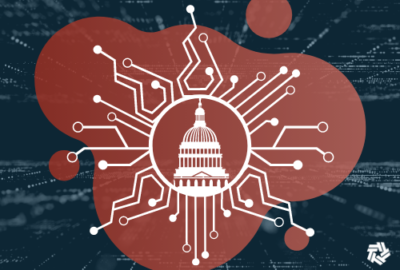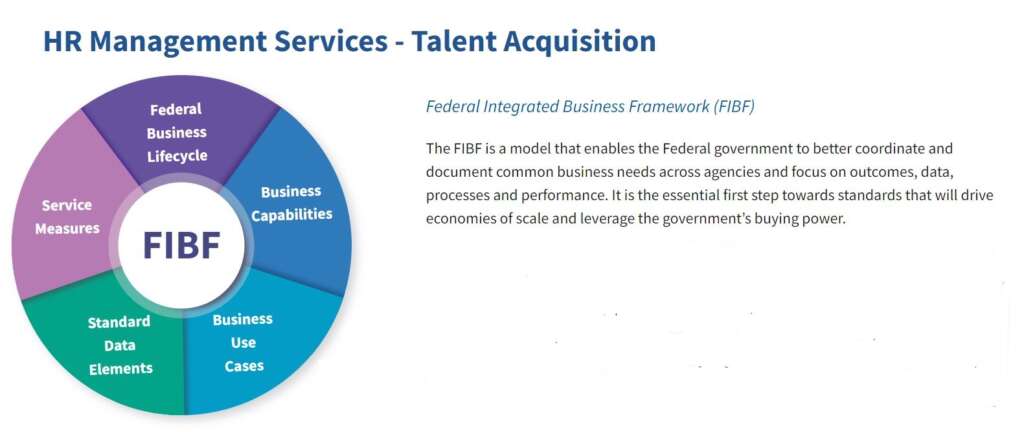

The Office of Personnel Management HR Quality Service Management Office is asking for vendors and agency to give feedback on the HR Federal Integrated Business...
When it comes to modernizing back office functions across the government, sometimes you have to start at the bottom.
Forget about the cloud or the modern software for a second, and focus on basic definitions.
That’s what the Office of Personnel Management is doing with the first update in five years to the Human Capital Business Reference Model (HCBRM).
Jeff Pollack, the HR Line of Business program manager at OPM, said they are focusing on those basic definitions through the draft HR Federal Integrated Business Framework (FIBF) that is out for public comment now.
“What the FIBF framework maps to is directly to the HCBRM with a unique service profile that actually identifies service activities, business capabilities, performance measures and standard data elements,” Pollack said in an interview with Federal News Network. “The FIBF service profile that’s being released, really for the first time, covers just the portion of the HCBRM that I define as the employee lifecycle, which is talent acquisition, talent development, employee performance management, compensation management and separation retirement.”
OPM has been developing the draft framework, for which comments are due by Feb. 8, for the last several years as part of the HR Quality Service Management Office (QSMO) effort.
“What we’re really looking to learn, are did we hit the mark with the standards that we have posted? Are there gaps? What are the best practices? Are the standards easy to understand? Are they implement implementable? Did we write them in such a way that as a vendor, you could look at them and say, ‘Ok, I can see where my company or my solution can deliver on these standards?’” Pollack said.

The goal is to better define the way that agencies have agreed to come together and converge on how they manage human capital management functions, said Steve Krauss, a senior advisor for the HR QSMO and the HRLOB at OPM.
“This is really, in essence, a brand new product for a lot of people,” he said. “Over time, what this is really about is trying to get agencies to converge on particular standards in terms of how they manage these human capital functions. Then, enable industry partners who are supporting those agencies to understand those standards as well. We expect that these standards may find their way into procurement requirements and things of that nature. And that will help facilitate better dialogue and understanding across the community so that people can do the same functions the same ways.”
This is why the HR QSMO is considered a little behind on some of the others around financial management, cybersecurity and grants. The Trump administration launched QSMOs in April 2019, in an effort to centralize mission support capabilities across the federal government.
The Office of Management and Budget gave OPM the lead for the HR QSMO last year.
“We brought together subject matter experts from the different governmental agencies to start building out the how you deliver the different subfunctions. Some of the feedback we received was that the subfunction doesn’t really need to exist on its own,” Pollack said. “In terms of creating the standards in the federal space, we developed working groups, and we work directly with the hands-on subject matter experts using different IT solutions and developing system agnostic requirements.”
He added the QSMO also brought in OPM policy experts to ensure the draft standards weren’t going astray of laws and regulations.
The draft framework also is a key milestone to advance the adoption of shared HR services.
Krauss said a big part of what the public release and feedback on the framework is trying accomplish, is to, both, get agencies and industry to converge on standards in terms of how they operate these human capital management functions.
The HR QSMO is developing a playbook to help agencies adopt the framework standards.
“The job of the QSMO is to stand up a marketplace of solutions and services that agencies can use to operationalize those standards. Our intent is to work with both federal and industry providers to be able to qualify various products and services and ensure that they meet the HRLOB standards. And then those products and services will become part of the HR QSMO marketplace, and agencies can rely on the fact that they have met certain qualification standards when they use them,” Krauss said. “Now, in the meantime, there are a lot of agencies that are already making plans to modernize their HR processes and their IT systems. The QSMO is already engaged with a number of agencies to help them coordinate that planning and those processes.”
Pollack added the draft framework is giving vendors and agencies to opportunity to weigh in on those standards before they are part of future technology service requirements.
“The other thing that we’re looking to do this year, or once we resolve and adjudicate the comments that we see receive on the current posting, is to post the rest of the HR Federal Integrated Business Framework (FIBF) for the HCBRM, to regulations.gov,” he said. “We mentioned that this scope is only the employee lifecycle, but we already have developed, and we do want to post the FIBF for the supporting and enabling functions. Lastly, the other big lift thing that we’d like to do is get a new version of the HCBRM out the door, and that will take a little bit of approval process and signatures within OPM as well as possibly OMB.”
While these standards and frameworks continue to come together, Krauss said the HR QSMO isn’t standing still.
He said in fiscal 2022 the QSMO, along with the General Services Administration’s IT Centers of Excellence, helped out two agencies with HR modernization plans and strategies.
“We completed the first full pass of an HR IT inventory and modernization roadmap assessment, which is to say, we actually went out and worked with all 24 CFO Act agencies and a few others besides to get a really concrete understanding of the HR IT systems, that various agencies are using and what their plans and timelines are for modernization and for upgrade,” Krauss said. “In part, because we’ve done that and develop those relationships, we have a lot of agencies that are coming to us to discuss their monetization plans, because they know that we know what’s going on throughout the community and can help advise them in that respect as well.”
What the survey showed was some agencies were using Oracle’s PeopleSoft product and are not necessarily willing to jump into the cloud and assume more risk, because their current systems are stable.
“There is a distinct group of agencies that we found that are interested in sticking with that platform for a longer period of time. But they are looking at other ways then to modernize their HR processes and to make those more agile, provide more functionality and service to their employee populations,” he said. “There are, however, a group of agencies that are interested in moving sooner rather than later, including some agencies that are not currently on PeopleSoft and have other reasons why they need to make that move sooner. We definitely see distinct populations with different needs. But as part of that, we’re also seeing how agencies do have needs that are similar to other agencies and that presents an opportunity to encourage some collaboration between agencies.”
Copyright © 2025 Federal News Network. All rights reserved. This website is not intended for users located within the European Economic Area.
Jason Miller is executive editor of Federal News Network and directs news coverage on the people, policy and programs of the federal government.
Follow @jmillerWFED

